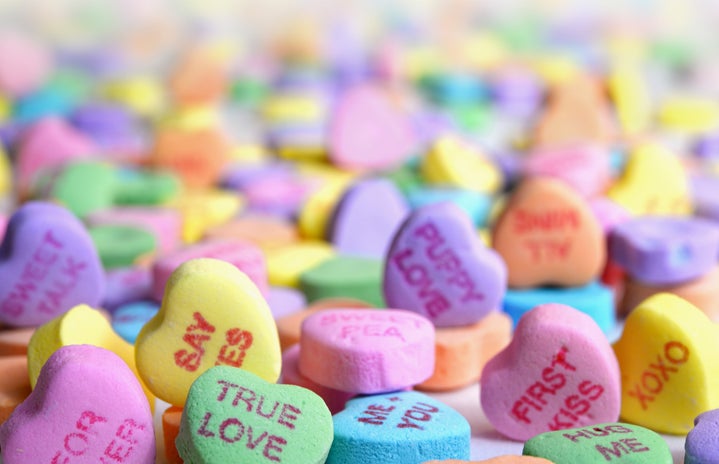I’ll be honest: I’m not a huge fan of candy hearts. As far as Valentine’s Day candies go, I’d go so far as to call them my least favorite. If I wanted to eat chalk and read cliché sweet nothings, I’d order a box from Amazon and redownload Tinder. But when I found out that this nefarious candy, along with modern Valentine cards, were helped to popularity by a Boston-born artist and businesswoman, I couldn’t resist digging a little more.
Esther Howland was born into a privileged family in Worcester, MA, in 1828. At the time, American Valentine’s Day cards were humorous and insulting (much like modern meme humor), whereas European cards were the more traditional, romantic, decorative types that we would think of today. While attending Mount Holyoke Female Seminary, she had a thought: what if American cards could be similarly presented and sold?
The Howland family was in the stationary and printing business, and thus Esther saw an opening. Starting from a shop in her family home, she set up an assembly line of local women, who handmade romantic, beautifully decorated cards with pithy little romantic captions, and was able to sell them at a much lower price than other competitors. Over the incoming years, the cards would become massively popular, ultimately taking in over $3 million in today’s currency, and becoming an Americanized symbol of love and romance.
As one of the first employers to pay women fair wages and as one of the first business woman magnates, her legacy as the “Mother of the American Valentine” is enduring and well-deserved. Though she ultimately died single and no longer in the card business (she sold the company to finance hospital bills after a crippling accident), her original cards remain collector’s items. She was instrumental in making Valentine’s Day and all of its kitschy love trappings into a lucrative business.
Now you may be wondering, how did she fit into the candy heart market?
In the late 1800s, lozenges were the newest fad in terms of delivering unpleasant tasting medicine. A doughy mix of gelatin, sweeteners, food coloring, and culinary gum, they were a popular yet arduously manufactured form of Victorian pharma. Oliver Chase, an enterprising businessman at the time (and also creator of Cockles candies, little shell-shaped candies that contained romantic couplets), invented a machine that automated lozenge production, and founded the New England Confectionery Company, or NECCO. After a good deal of invention and reinvention, the pastel heart-shaped candies were commercially available, but not with the little one-liners you’d expect to see today. It’s been said that the iconic red-printed clichés were inspired by Esther Howland’s own romantically phrased cards, ultimately proving that she’s the girlboss behind both the modern day commercialism of the holiday.
Even if they taste like medicine and just remind me that I’m spending Valentine’s Day single this year, the cards and the candies are undeniably iconic symbols of America’s ability to commercialize and enterprise an emotion as esoteric and strange as love, and turn it into something pretty all the same.
Brach’s Recipe for Conversation Hearts:
Sugar, Corn Syrup, Dextrose, Glycerin, Gelatin, Citric Acid, Tragacanth Gum, Artificial Flavors, Red 40 Lake, Red 3, Yellow 5 Lake, Yellow 6 Lake, Blue 1 Lake, Blue 2 Lake.
Sources:
https://www.mentalHistory of Conversation Candy Hearts – a Valentine’s Staple –
ManyEatsfloss.com/article/61510/history-conversation-heart
The History of the Conversation Heart | Mental Floss
https://www.smithsonianmag.com/arts-culture/the-history-of-sweetheart-candies-157116/
https://www.bhg.com/holidays/valentines-day/recipes/sweet-history-of-valentines-conversation-hearts/
https://www.newenglandhistoricalsociety.com/sweet-story-conversation-hearts/


